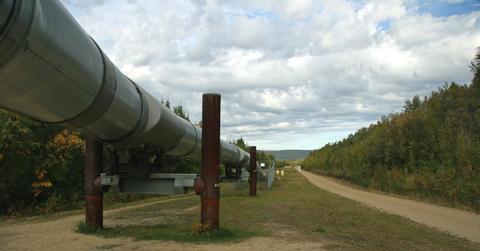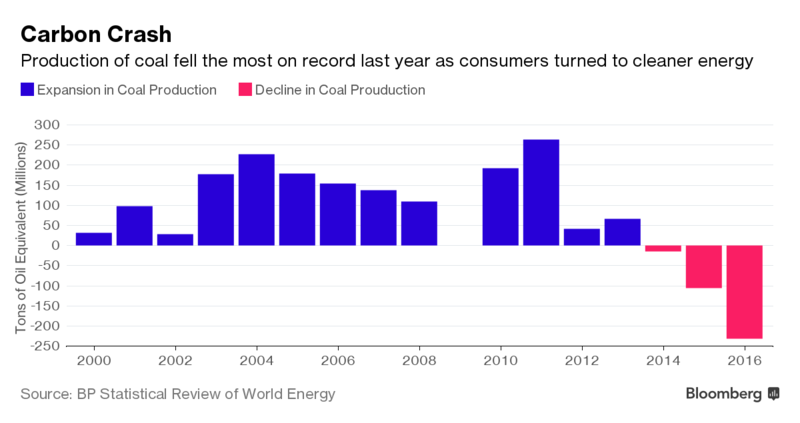Why Global Coal Production Just Experienced Its Biggest Drop On Record
The coal industry has seen a complete collapse in production worldwide due to major energy consumers like the United States and China making a push toward natural gas and renewable energy. It's a trend that won't be changing anytime soon.
Updated May 26 2019, 8:13 p.m. ET
Coal production has been dying for many years, and it’s not just due to the rise of renewable energy. Natural gas has been the leading factor in the displacement of coal, and while it’s still a fossil fuel, it’s displaced coal to its lowest level of production since the early 1980s. With costs continuing to decline for these alternative sources, the demising trend of coal is going to continue.
Natural gas provides a middle ground between coal and renewable energy. It still pollutes the air with carbon emissions, but it’s a cleaner burning at 50 percent of what coal emits and when compared to gas that’s used in vehicles. Electric generation from natural gas has continued to rise since the late 1980s and it topped coal as the most-used source in the United States in 2015.
Not only has coal been dropping, but it’s seen a market crash. Over the past three years, Bloomberg reports that there has been a rapidly-moving decline in coal production. After having one of its biggest expansive years back in 2011, it saw a similar level of decline just in 2016. The report states that “global consumption dropped 1.7 percent last year compared with an average 1.9 percent yearly increase from 2005 to 2015.”
Many people see natural gas as the most reasonable option for electricity as the renewable industry keeps growing. While sources like wind and solar generation have seen huge production increases and cost decreases in recent years, some still are skeptical at completely relying on it. Last March, Forbes pointed out “capacity isn’t production,” noting that traditional methods of nuclear power and natural gas-fired power reached closer to its full capacity than renewables.
Even with the continued use of fossil fuels, emissions have held steady over the course of coal’s decline. It has rapidly grown in Asia since the turn of the millennium until 2013, it’s fallen in Europe, and America has fluctuated. Seeing a steady level of CO2 emission is both good and bad. While it’s great to see it not rapidly pumping up, that number needs to come down.
What’s going to completely doom coal? Big energy consumers like the United States and China are burning significantly less amounts of it. Despite the US pulling out of the Paris climate agreement, many cities and companies are still moving forward with renewable energy solutions. China has proven their dedication to sustainability with launching the largest worldwide floating solar farm and a wind turbine manufacturer helping United States coal miners convert into a new profession.
Spencer Dale, Chief Economist of VP, also tells Bloomberg that the continuing battle between the two alternative sources will continue the push away from coal: "The increasing availability and competitiveness of natural gas and renewable energy, combined with mounting government and societal pressure to shift away from coal towards cleaner, lower-carbon fuels."

